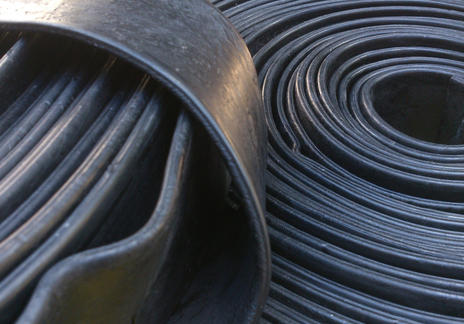Introduction
Rubber mixing plays a crucial role in the automotive industry, as it directly affects the performance and durability of various rubber components. Achieving high-quality rubber compounds is essential for manufacturing reliable and long-lasting automotive parts, such as seals, gaskets, and tires. To accomplish this, it is imperative to utilize efficient and effective rubber mixing techniques, specifically tailored for automotive applications. This article will discuss the top 5 rubber mixing techniques that contribute to the success of the automotive industry.
Open Mill Mixing
One of the most commonly used rubber mixing techniques in the automotive industry is open mill mixing. This process involves two horizontally placed and parallel rotating rollers that mix and knead the rubber compound. The raw materials are fed into the gap between the rollers, which compress and shear the rubber, effectively dispersing the various ingredients and producing a homogenous mixture.
Open mill mixing offers several advantages for the automotive industry. It is a cost-effective method, requiring relatively simple equipment and lower initial investment. Furthermore, it allows for easy observation of the mixing process, enabling operators to make adjustments as necessary and ensure proper dispersion of ingredients. However, there are some disadvantages associated with open mill mixing. The process can be labor-intensive, as it often requires manual feeding of materials and removal of the mixed compound. Additionally, the open nature of the process can result in contamination and temperature fluctuations, which can impact the quality of the rubber compound.
To overcome these challenges and ensure optimal rubber mixing for automotive components, it is essential to follow best practices for open mill mixing. These include using clean and well-maintained equipment, carefully monitoring the temperature during the mixing process, and maintaining appropriate roller gaps to achieve the desired dispersion and consistency. Furthermore, operators should be adequately trained to identify potential issues and make necessary adjustments to ensure consistent, high-quality rubber compounds for use in automotive applications.
Internal Mixer Mixing
Another essential rubber mixing technique for the automotive industry is internal mixer mixing. In this process, the rubber compound is mixed within a closed chamber using rotors that apply both shear and pressure to the material, resulting in a homogenous mixture. Internal mixers are known for their efficiency, as they can produce high-quality rubber compounds in less time compared to open mills.
Internal mixer mixing offers several benefits for automotive rubber parts manufacturing. It provides better dispersion of ingredients, leading to a more consistent and uniform compound. Additionally, the closed chamber reduces the risk of contamination and enables better temperature control, which is critical for the quality of the rubber compound. However, some drawbacks of internal mixer mixing include the high initial investment required for the equipment and the need for skilled operators to manage the process effectively.
Microquick Engineers’ Hydraulic Dispersion Kneader significantly enhances internal mixer mixing by offering a range of technical advantages. The kneader features automated continuous hydraulic ram pressure on ingredients, ensuring excellent dispersion and consistent quality compounding. This innovative equipment also reduces batch preparation time to 7-12 minutes, increasing overall production efficiency. Furthermore, the Hydraulic Dispersion Kneader is designed to produce hard batches with wear resistance in the mixing chamber and anti-breakage properties of rotors, making it an ideal solution for the automotive industry.
Intensive Mixer Mixing
Intensive mixer mixing is a highly efficient method for blending rubber compounds, specifically designed for the automotive industry. This advanced mixing technique involves a closed chamber with high-speed rotors that apply intense shear force and pressure to the rubber materials, resulting in superior dispersion and homogeneity. With its advanced capabilities, intensive mixer mixing significantly contributes to the production of high-quality rubber compounds for automotive applications.
There are several advantages and disadvantages of intensive mixer mixing in automotive rubber manufacturing. On the positive side, this method offers excellent dispersion of ingredients, resulting in a more uniform and consistent compound. Additionally, the closed chamber design minimizes contamination risks and allows for better temperature control, which is crucial for maintaining the quality of rubber compounds. On the other hand, intensive mixer mixing requires a substantial initial investment in equipment and skilled operators to manage the process effectively.
To optimize intensive mixer mixing for automotive applications, several guidelines should be followed. Firstly, selecting the appropriate mixer type and configuration is essential for achieving the desired compound properties. Additionally, maintaining proper temperature control during the mixing process is crucial for ensuring compound quality and consistency. Monitoring mixing speed and time is also essential, as these factors can significantly impact the dispersion of ingredients and the overall quality of the rubber compound. Furthermore, implementing quality control measures and regular equipment maintenance can help ensure the reliability and effectiveness of the intensive mixer mixing process.
High-Intensity Mixers
High-intensity mixers are advanced rubber mixing equipment that deliver efficient and consistent mixing performance. These mixers operate by applying intense shear forces and pressure to the rubber materials within a closed chamber, resulting in superior dispersion and homogeneity. High-intensity mixers have become increasingly popular in the automotive rubber production sector, thanks to their ability to produce high-quality rubber compounds efficiently.
There are several advantages to using high-intensity mixers in automotive rubber production. Firstly, the closed-chamber design minimizes the risk of contamination, ensuring a cleaner and more consistent rubber compound. Secondly, the intense mixing action ensures excellent dispersion of ingredients, resulting in a uniform compound with improved properties. However, there are also some challenges associated with high-intensity mixers. The equipment can be quite expensive, requiring a significant initial investment. Additionally, operating high-intensity mixers requires skilled personnel who can effectively manage the process and ensure optimal mixing performance.
To maximize the effectiveness of high-intensity mixers in automotive rubber mixing, several tips can be followed. One crucial tip is to maintain proper temperature control throughout the mixing process, as temperature fluctuations can negatively impact the quality of the rubber compound. Another important aspect is to monitor the mixing speed and time, as these factors can significantly affect the dispersion of ingredients and the overall quality of the rubber compound. Lastly, implementing regular equipment maintenance and quality control measures can help ensure the reliability and effectiveness of high-intensity mixers in automotive rubber production.
Multi-Stage Mixing
Multi-stage mixing is an advanced rubber compounding technique that offers several benefits for automotive rubber manufacturing. This method involves mixing the rubber compound in multiple stages, with each stage tailored to achieve specific properties or incorporate specific ingredients. By dividing the process into distinct steps, multi-stage mixing allows for better control over the final compound properties, resulting in higher-quality rubber products for automotive applications.
The multi-stage mixing process typically consists of several stages, each designed to address specific aspects of the rubber compounding process. For example, the initial stage may focus on blending the base rubber with primary fillers and additives, while subsequent stages may introduce secondary ingredients, such as curing agents or specialized additives. By breaking down the mixing process into separate stages, it becomes easier to optimize each step and ensure a consistent and uniform rubber compound.
When implementing multi-stage mixing for automotive rubber compounds, there are several factors to consider. Firstly, it is essential to determine the appropriate number of stages and the specific goals for each stage. This may involve balancing the need for efficient production with the desired compound properties and performance requirements. Secondly, selecting the right mixing equipment for each stage is crucial, as the equipment must be capable of handling the specific materials and processes involved in that stage. Lastly, monitoring and controlling process parameters, such as temperature, mixing speed, and time, are critical for ensuring optimal mixing performance and achieving the desired compound properties.
Factors Affecting Rubber Mixing
Various factors can significantly impact the performance and quality of rubber mixing in the automotive industry. Understanding and controlling these factors is essential for achieving optimal rubber compounds and maintaining consistent product quality.
Raw Material Characteristics: The properties of the raw materials used in rubber compounding play a vital role in the mixing process. Factors such as particle size, shape, and the chemical composition of the ingredients can affect the dispersion, viscosity, and overall quality of the rubber compound. It is crucial to select high-quality raw materials and ensure proper storage and handling to minimize potential issues during the mixing process.
Temperature Control: Maintaining proper temperature throughout the rubber mixing process is essential for achieving consistent and high-quality compounds. Temperature fluctuations can lead to premature vulcanization or degradation of the rubber materials, negatively impacting the final product properties. Implementing temperature control measures, such as cooling systems and insulation, can help maintain the optimal temperature during mixing.
Mixing Speed and Time Optimization: The mixing speed and duration play a critical role in the dispersion of ingredients and the overall quality of the rubber compound. Optimizing these parameters can help ensure effective mixing while avoiding potential issues such as overheating or insufficient dispersion. Regular monitoring and adjustments of mixing speed and time can lead to improved mixing performance and consistent rubber compounds.
Additive Incorporation: The incorporation of additives, such as fillers, curing agents, and other functional ingredients, can significantly impact the rubber compound’s properties and quality. Properly incorporating these additives during the mixing process is essential for achieving the desired compound characteristics. Factors such as the order of addition, mixing speed, and temperature can all influence the effectiveness of additive incorporation.
Machine and Tool Dynamics: The design and operation of the mixing equipment can also influence the rubber mixing process. Factors such as rotor design, chamber size, and mixing pressure can all impact the dispersion, homogeneity, and overall quality of the rubber compound. Regular maintenance and calibration of the mixing equipment can help ensure optimal performance and consistent mixing results.
Troubleshooting and Quality Control
In the automotive rubber mixing process, several challenges can arise that may impact the quality and performance of the final rubber compounds. Identifying and addressing these issues is crucial for ensuring optimal rubber mixing and achieving the desired product properties. Some common challenges encountered in automotive rubber mixing include uneven dispersion of ingredients and color inconsistencies in the rubber compound.
Uneven dispersion occurs when the ingredients in the rubber compound are not adequately mixed, leading to irregularities in the material properties. This issue can be caused by factors such as improper mixing equipment, insufficient mixing time, or inadequate temperature control during the mixing process. To address this challenge, it is essential to regularly monitor the mixing process, adjust the equipment settings, and implement quality control measures that ensure proper dispersion of ingredients.
Color inconsistencies in rubber compounds can result from issues such as uneven dispersion of pigments, contamination during mixing, or variations in the raw materials. These inconsistencies can compromise the appearance and performance of the final rubber product. Implementing quality control measures, such as regular inspection of raw materials and monitoring of the mixing process, can help identify and address color inconsistencies at the source. Additionally, rectifying these issues by adjusting the mixing parameters, cleaning the equipment, or changing the raw materials can lead to improved mixing outcomes and more consistent rubber compounds.
Overall, effective troubleshooting and quality control measures are essential for ensuring optimal rubber mixing in the automotive industry. By identifying and addressing common challenges, automotive manufacturers can produce high-quality rubber compounds that meet the stringent performance requirements of their products.
Advanced Mixing Techniques and Innovations
The automotive rubber mixing industry continually strives to develop and adopt advanced techniques and innovations that improve the efficiency, quality, and performance of rubber compounds. Some of the most promising advancements in rubber mixing technology include inline monitoring and automation, integration of nanocomposites, and the utilization of artificial intelligence and machine learning for enhanced mixing performance.
Inline Monitoring and Automation in Rubber Mixing: Inline monitoring and automation technologies offer significant benefits for the rubber mixing process. These systems provide real-time data on critical process parameters, such as temperature, mixing speed, and dispersion quality, enabling operators to make timely adjustments and optimize the mixing process. Automation technologies also streamline the mixing process by reducing manual labor, increasing efficiency, and minimizing the potential for human error.
Integration of Nanocomposites in Automotive Rubber Manufacturing: The incorporation of nanocomposites into automotive rubber compounds presents an exciting opportunity for enhancing the performance of rubber products. Nanocomposites are materials composed of nanoparticles dispersed within a matrix, providing improved properties such as increased strength, durability, and heat resistance. By integrating nanocomposites into automotive rubber manufacturing, it is possible to create rubber compounds with superior performance characteristics that meet the demanding requirements of modern vehicles.
Utilizing Artificial Intelligence and Machine Learning for Enhanced Rubber Mixing: The application of artificial intelligence (AI) and machine learning (ML) techniques in rubber mixing processes has the potential to revolutionize the industry. AI and ML algorithms can analyze vast amounts of data from the mixing process, identify patterns and trends, and make predictions about optimal mixing parameters. By harnessing the power of AI and ML, rubber manufacturers can optimize their mixing processes, improve the quality and consistency of their products, and reduce production costs.
As the automotive industry continues to evolve and demand higher-performing rubber materials, it is essential for rubber manufacturers to stay at the forefront of mixing technology advancements. By incorporating these cutting-edge techniques and innovations, automotive rubber manufacturers can ensure that their products remain competitive and meet the ever-changing needs of their customers.
Conclusion
In summary, the top 5 rubber mixing techniques for the automotive industry include open mill mixing, internal mixer mixing, intensive mixer mixing, high-intensity mixers, and multi-stage mixing. Each of these techniques offers unique advantages and challenges, making it crucial for automotive rubber manufacturers to carefully select the most appropriate method for their specific applications.
As the automotive industry continues to evolve and demand higher-performing rubber materials, it is essential for rubber manufacturers to stay at the forefront of mixing technology advancements. By incorporating these cutting-edge techniques and innovations, automotive rubber manufacturers can ensure that their products remain competitive and meet the ever-changing needs of their customers. Emphasis on continuous improvement and innovation in rubber mixing technologies will play a vital role in maintaining the high quality and performance of automotive rubber components.
Discover Advanced Mixing Solutions
For those interested in learning more about Microquick Engineers and their innovative Hydraulic Dispersion Kneader, we invite you to explore their website and gain insights into the advanced rubber mixing solutions they offer. With over 25 years of industry experience, Microquick Engineers’ Hydraulic Dispersion Kneader boasts several technical benefits, including automated continuous hydraulic ram pressure, a reduced batch preparation time, and consistent quality compounding. Designed to cater to industries such as automotive, industrial, consumer products, healthcare, and electrical, the Hydraulic Dispersion Kneader is the ideal solution for your rubber mixing needs. Check out Microquick Engineers’ website, their about page, and the informative brochure for further information.


